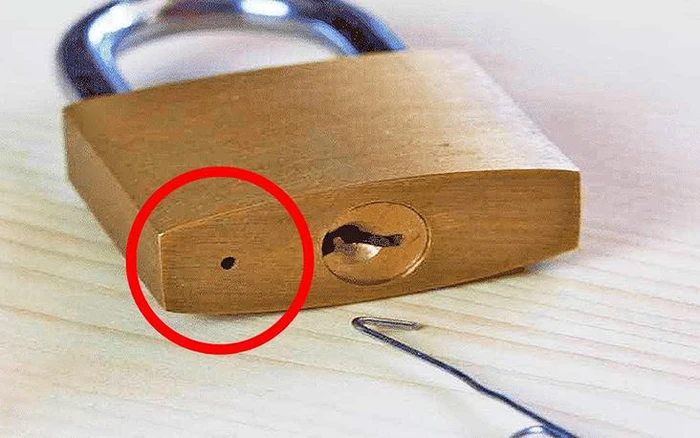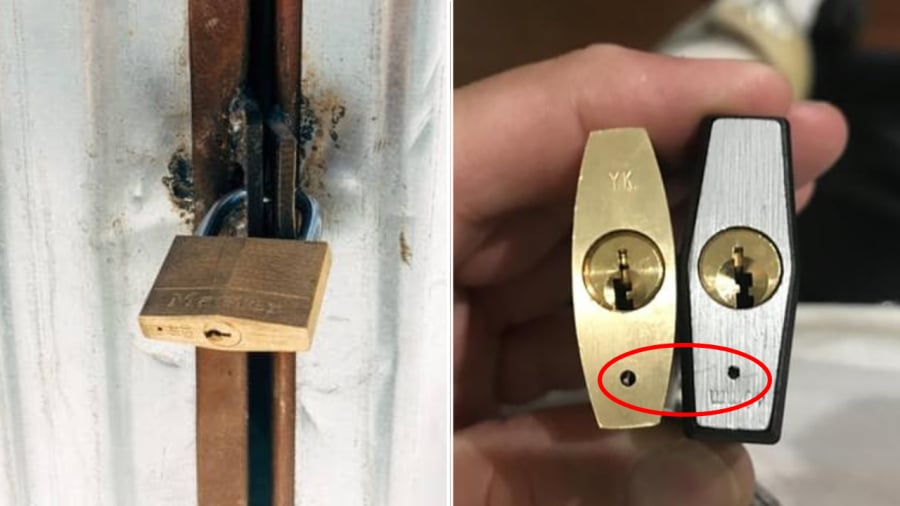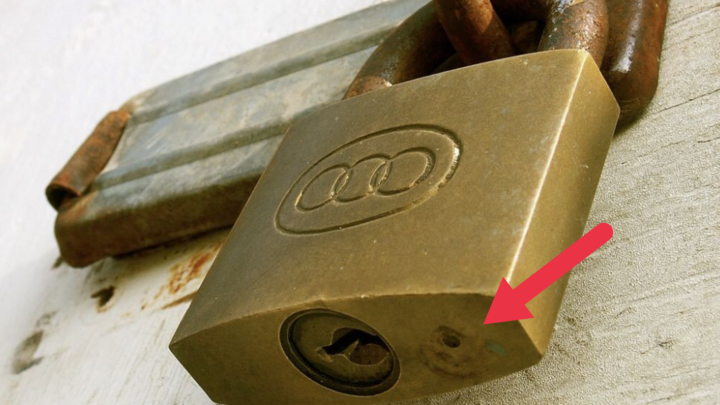Unlocking the Mystery Behind the Little Hole
Ever spotted that tiny hole at the bottom of a padlock and thought, “What’s the point of that?” You’re not alone. Most people never give it a second glance. But here’s the truth — that little hole isn’t there for looks. It has some surprisingly smart functions that help your lock last longer and work better, especially in outdoor conditions.
Let’s explore the real reasons behind that hole and why it matters more than you think.

The Basics: What Makes Up a Padlock?
Before diving into the purpose of the small hole, it helps to understand what a typical padlock is made of. A standard lock has three main parts:
Lock body – This is the central piece that holds the internal mechanism.
Shackle – The curved, U-shaped part that opens and closes.
Key or combination mechanism – The part that unlocks the shackle.
And then there’s that small hole — usually found at the bottom of the lock. While it might seem like a random design feature, it plays a very functional role in the lock’s overall performance.
Video : Why Your Padlock Has That Mysterious Hole on the Side
Water Drainage: The Lock’s Hidden Survival Trick
So what happens when your padlock is left outside in the rain? Moisture builds up inside, especially if the lock isn’t completely sealed. Over time, that trapped water can lead to rust and damage the inner parts of the lock.
That’s where the tiny hole comes into play. It works as a drainage outlet. Any water that finds its way into the lock has a clear path to escape. Without that exit point, water would just sit there, corroding the internal components and making the lock harder to use or eventually useless.
Think of it like a drainpipe for your lock — small, but essential.
Rust Resistance: Protecting the Inside from Corrosion
Many padlocks are made from tough materials like galvanized steel or brass. But even the strongest metal can break down when moisture lingers inside. Rust isn’t just a cosmetic problem. Once it starts affecting the moving parts of a lock, it becomes a real issue.

That small hole helps prevent all that by giving the moisture somewhere to go. Less water inside means a lower chance of rust forming. And when the rust stays away, your lock lasts much longer and works like it should.
Lubrication: Keeping the Mechanism Smooth
Over time, the inner parts of a padlock can dry out or get sticky, especially if the lock is used regularly or left outside in extreme weather. When this happens, unlocking it can feel like a struggle.
Luckily, the same little hole that drains water can also be used to add lubricant. You don’t need to take the lock apart or do anything complicated. Just spray some lubricant into the hole and let it work its way into the mechanism. It’s a quick fix that can make an old or stubborn lock feel brand new.
Think of it like an oil change for your lock — simple maintenance that keeps everything running smoothly.
Video : Here’s What The Tiny Hole In Locks Is For
Locksmith Tricks: The Hole’s Secret Role in Emergencies
Here’s something most people don’t know: that small hole isn’t just useful for regular maintenance. In some types of padlocks, trained locksmiths can use it as a way to unlock the device without damaging it.
By inserting specialized tools through the hole, they can sometimes manipulate the internal parts directly. This is especially helpful in emergency situations where the lock has to be opened but the key is missing. It’s not a method the average person can use, but it’s an important trick for professionals.
It’s like having a hidden side entrance to a locked building — only those who know how to use it can take advantage of it.
How to Care for the Hole and Make Your Lock Last Longer
Now that you know this little hole does a lot of heavy lifting, it makes sense to take care of it. Here are a few tips:
Keep it clean – Dust, dirt, or cobwebs can clog the hole and make it less effective. A quick wipe with a cloth or a soft brush can help keep it clear.
Use it for lubrication – Don’t wait for your lock to stick. Every few months, add a drop or two of oil or a quick spray of lubricant to keep things moving.
Don’t block it – When installing or hanging a padlock, avoid positioning it upside down where the hole can’t drain properly.

The Smallest Part That Does the Biggest Job
It’s easy to overlook the small things, especially on everyday items like padlocks. But that tiny hole at the bottom is a perfect example of smart design — a subtle feature with a powerful purpose.
From protecting against rust to giving access for emergency opening, it proves that good engineering is all about details. Now that you know what it’s for, you’ll never see a padlock the same way again.
So the next time you unlock your gate, locker, or toolbox, take a moment to appreciate that little hole. It may not look like much, but it’s been working hard to keep your stuff secure all along.